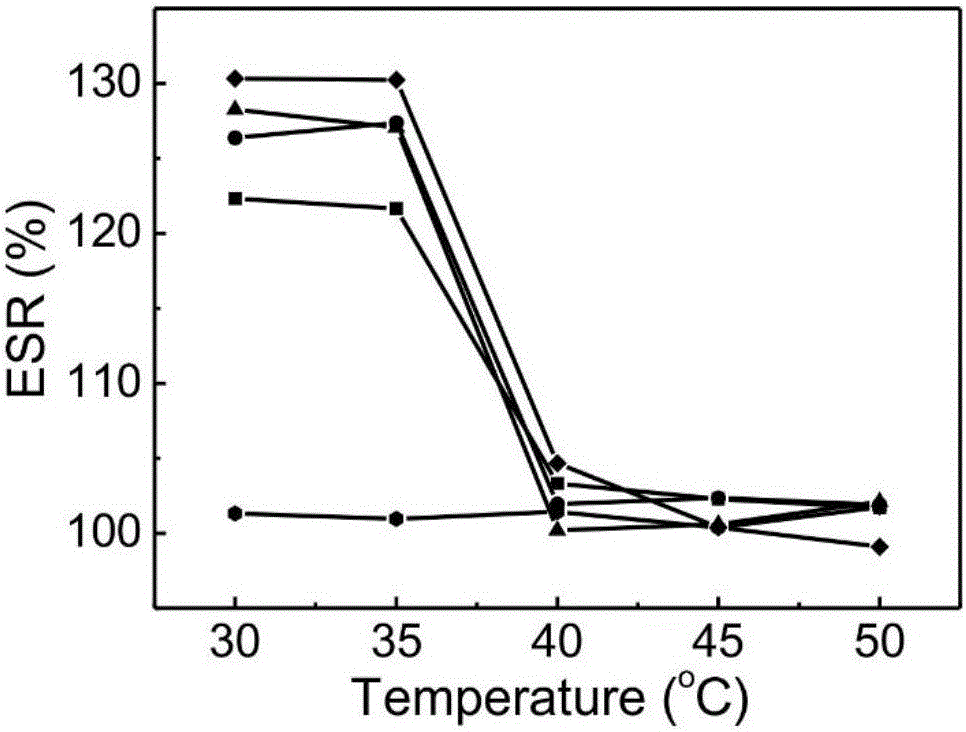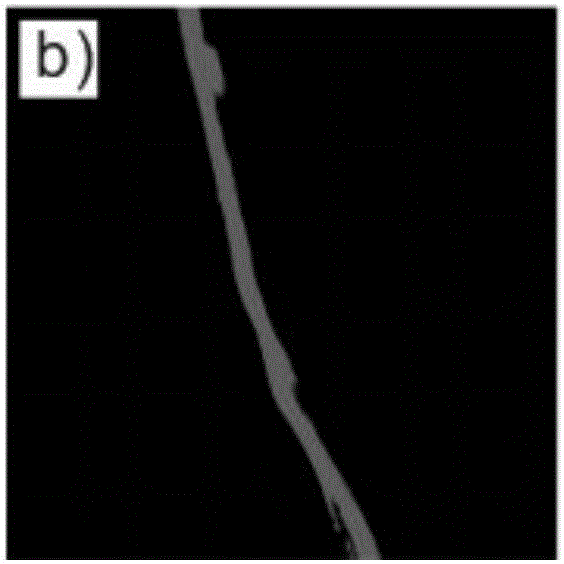Method for realizing textile intelligent cleaning function through crosslinking temperature-sensitive copolymer
A technology of copolymers and textiles, which is applied in the field of textile intelligent cleaning functions, can solve the problems such as the difficulty in realizing the hydrophilic/hydrophobic properties of textile materials, and achieve the effect of enhanced self-cleaning function and convenient operation
- Summary
- Abstract
- Description
- Claims
- Application Information
AI Technical Summary
Problems solved by technology
Method used
Image
Examples
Embodiment 1
[0033] A method of realizing the intelligent cleaning function of textiles by cross-linking temperature-sensitive copolymers in this embodiment. The percentages mentioned in this example are all solution mass percentages. Utilize the contained hydroxyl group of temperature-sensitive copolymer and pure cotton fabric, can react with the characteristic of carboxyl group contained in citric acid, temperature-sensitive copolymer is fixed on the surface of pure cotton fabric by cross-linking reaction, comprises the following steps: 1) weigh certain Quantity of untreated cotton fabric, P(MEO 2 MA 136 -co-EGMA 24 ) molecular formula 2%, 2% citric acid, 3% sodium hypophosphite, and 10% water are soaked in 1,4-dioxane solution; 2) Take out the pure cotton fabric; 3) Put it in an oven and bake it at 130°C for 1min; 4) Take out the pure cotton fabric from the oven, wash it with clean water, dry it, weigh it, and its weight gain rate is 2.76%; 5) Soak the prepared pure cotton fabric i...
Embodiment 2
[0035] A method of realizing the intelligent cleaning function of textiles by cross-linking temperature-sensitive copolymers in this embodiment. The percentages mentioned in this example are all solution mass percentages. Utilize the contained hydroxyl group of temperature-sensitive copolymer and pure cotton fabric, can react with the characteristic of carboxyl group contained in citric acid, temperature-sensitive copolymer is fixed on the surface of pure cotton fabric by cross-linking reaction, comprises the following steps: 1) weigh certain Quantity of untreated cotton fabric, P(MEO 2 MA 136 -co-EGMA 24 ) molecular formula 4%, 2% citric acid, 3% sodium hypophosphite, and 10% water soaked in 1,4-dioxane solution; 2) Take out the pure cotton fabric, dipping and rolling twice; 3) Place it in a 60°C Bake in an oven at 130°C for 1 min; 4) Take out the pure cotton fabric from the oven, wash it with clean water, dry it, and weigh it, the weight gain rate is 3.53%; 5) Put the p...
Embodiment 3
[0037] A method of realizing the intelligent cleaning function of textiles by cross-linking temperature-sensitive copolymers in this embodiment. The percentages mentioned in this example are all solution mass percentages. Utilize the contained hydroxyl group of temperature-sensitive copolymer and pure cotton fabric, can react with the characteristic of carboxyl group contained in citric acid, temperature-sensitive copolymer is fixed on the surface of pure cotton fabric by cross-linking reaction, comprises the following steps: 1) weigh certain Quantity of untreated cotton fabric, P(MEO 2 MA 136 -co-EGMA 24 ) molecular formula 8%, citric acid 2%, sodium hypophosphite 3%, water 10% soaked in 1,4-dioxane solution; 2) take out the pure cotton fabric, dipping and rolling twice; 3) put it in an oven at 130 ℃ for 1 min; 4) Take out the pure cotton fabric from the oven, rinse it with clear water, dry and weigh it, and the weight gain rate is 4.62%; 5) Put the prepared pure cotton ...
PUM
| Property | Measurement | Unit |
|---|---|---|
| fluorescence | aaaaa | aaaaa |
Abstract
Description
Claims
Application Information
 Login to View More
Login to View More - R&D
- Intellectual Property
- Life Sciences
- Materials
- Tech Scout
- Unparalleled Data Quality
- Higher Quality Content
- 60% Fewer Hallucinations
Browse by: Latest US Patents, China's latest patents, Technical Efficacy Thesaurus, Application Domain, Technology Topic, Popular Technical Reports.
© 2025 PatSnap. All rights reserved.Legal|Privacy policy|Modern Slavery Act Transparency Statement|Sitemap|About US| Contact US: help@patsnap.com



